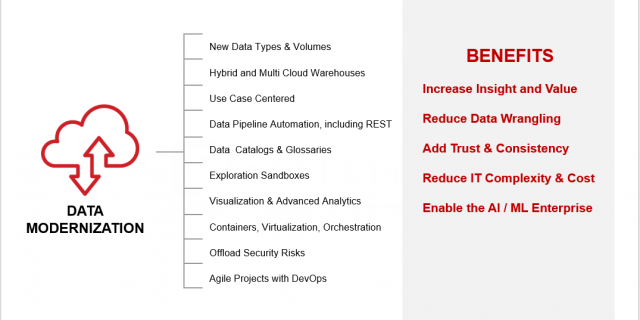I’m often asked how data and analytics can help to solve key industry problems in healthcare. With that in mind, three key industry issues rise to the top of the list.
1. Cost of Care Delivery
The cost of care delivery is at the center of the problems facing the healthcare Industry. Healthcare spending accounts for ~18% of US GDP. Although industry actors are working to increase the efficiency of care delivery, there is significant pressure on revenue with newer payment/reimbursement models making it difficult to even maintain historical financial parity.
There is a critical need to use data and analytics to identify trends that enable healthcare organizations to increase the effectiveness of care, reduce errors, better understand risk, reduce costs, increase operational efficiency, and capture maximum reimbursements for care delivery. Healthcare has been slow to implement modern data and analytics capabilities, leaving healthcare leaders without the proper information to make decisions and affect positive change.
2. Industry Consolidation
In the quest to increase efficiencies, industry consolidation has been rampant. Although consolidation promises long term operational efficiencies, it typically has a long payoff from an information visibility and insight perspective. Hospitals and payers are complex businesses and organizations, have complex data and applications systems, and are subject to many regulatory rules and hurdles, particularly around data security. When large players are combined, it typically takes years to achieve a reasonable level of consistency and access to data (information), which increases the blind spots mentioned above.
Healthcare organizations need help establishing a common view of data (information) across these complex organizations. If approached in the right way, modern data and analytics architectures, technologies and practices, collectively “Data and Analytics Programs,” can be leveraged to enable significant increases in efficiency and scale of data management and analytics systems, enabling a consistent and trusted view of healthcare data (information). And the relative cost of these modern data and analytics programs is typically well below that of the legacy programs and approaches.
3. Increase in Available Data
The proliferation of electronic health records systems, medical devices, and digital health has resulted in huge increases in the volume and variety of healthcare data, and is still picking up speed – this is truly Big Data. This presents vast opportunities to improve care through clinical research, improved care paths, mobile health and otherwise, however, it also presents significant data management and governance challenges for healthcare organizations.
Healthcare organizations are starved for the architectures, tools, processes, and policies needed to drive consistency, access, security, understanding, trust, and management of this deluge of Big Data. Unlocking the treasure trove of value held within this data requires implementing modern data management, analytics and governance systems, and programs to turn this data into information. This includes modern BI, predictive analytics, and artificial intelligence systems to enable forward-looking insight and action from this information.
What is Data Modernization?
There is a critical need in most healthcare organizations to modernize their data and analytics programs and capabilities to take advantage of the ever-growing amount of information available.
Data Modernization – Capabilities and Benefits
Common Use Cases
Leveraging data and analytics can be key in helping to make improvements, gain insights and realize efficiencies for multiple healthcare categories and needs, including:
- Reduced ED/Urgent Care Wait Times
- Readmission/Re-hospitalization Prediction and Reporting
- Contract Management (payer scorecards; contract performances, etc.)
- Patient Satisfaction
- Regulatory Items (HEDIS; Stars; P4P; ACO, etc.)
- Population Health (risk management; quality care; registry items)
- Leakage Analysis
- Utilization (though you could probably fold this into provider performance or service line)
- Labor Productivity (nursing hours; RVUs, etc.)
- Treatment and Medication Trend Analysis (top conditions, eligibility, risk score, cost-sharing, PMPY trend, Price and Use, High-Cost Claimants)
- Provider Performance Analysis – Efficiency ($s) and Quality
- Disease Management Analysis
- Facility Analysis
- Claims Denial Analysis
- Preventive Services (gaps in care)
- Disease Surveillance
- Diagnosis Prevalence
- Service Line Analytics
Summary
To achieve Healthcare’s Triple Aim (improving population health, improving patient experience, and reducing the cost of care), healthcare organizations need to take advantage of the insights available within the ever-increasing volume, variety, and velocity of data being produced in our always-on and always-connected world. Turning this data into insight requires leveraging modern data and analytics architectures and capabilities.


